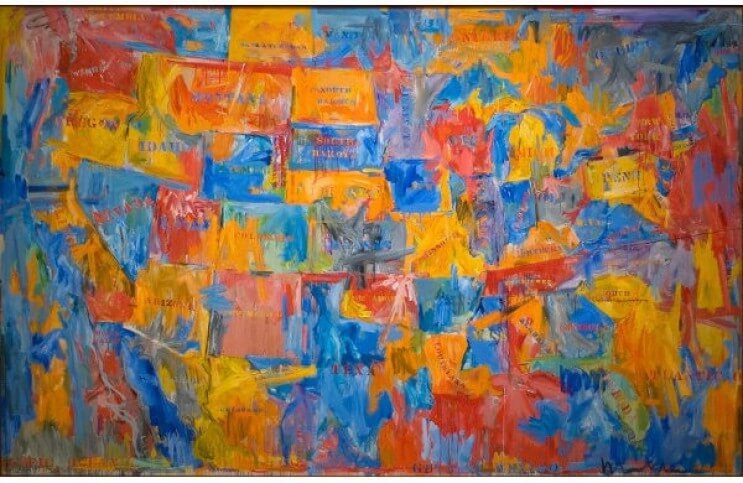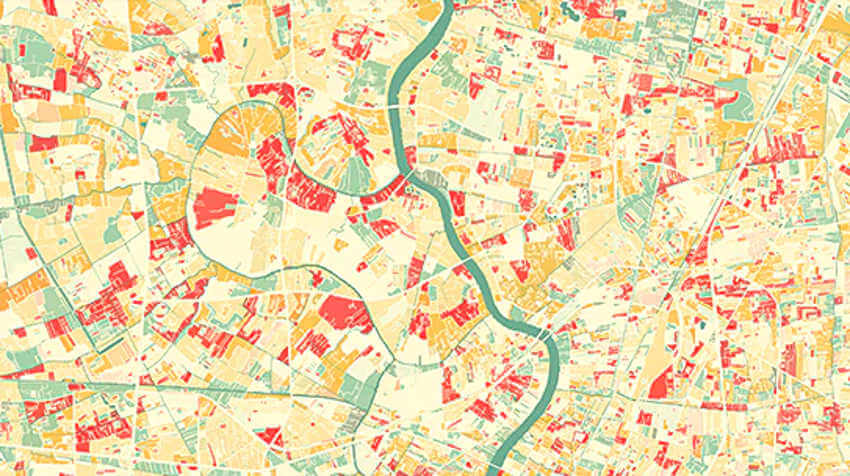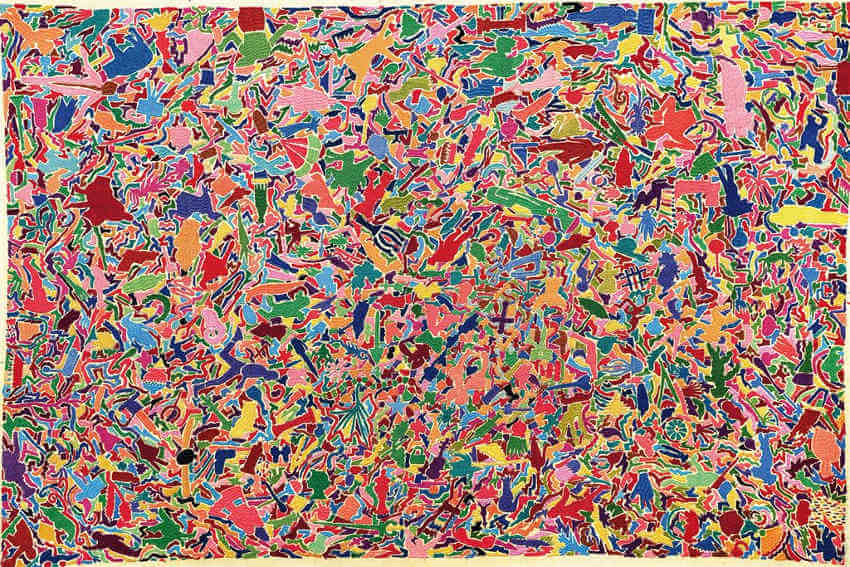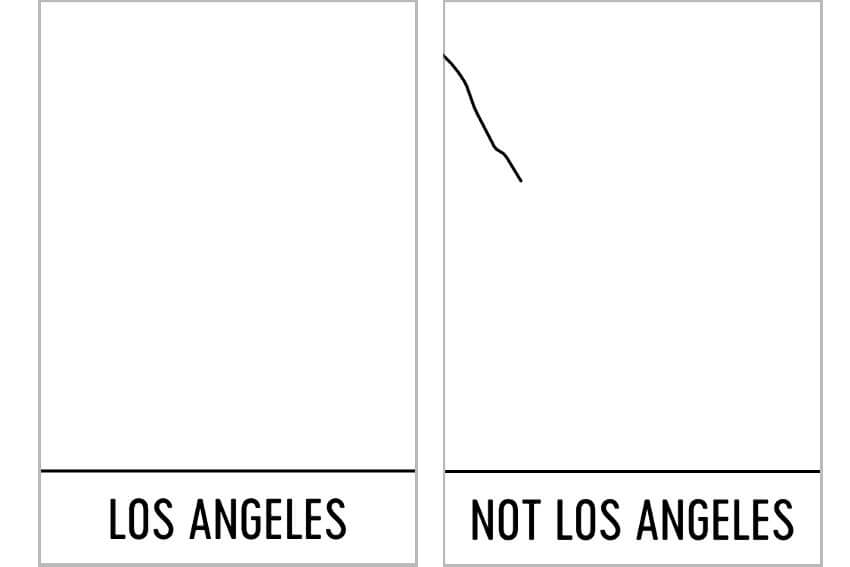
When City Maps Become Abstract Art Prints
A spate of articles appeared on the Internet last month drawing attention to a crowdfunding campaign that was raising money a computer program that its developer says can make a customized abstract map of any city in the world. On one hand this was nothing unusual. Crowdfunding projects have become routine blog fodder. And almost every day I read about someone using the phrase abstract art to describe something that is neither abstract nor art: satellite images of the moon that look like abstract art; spilled pizza sauce that looks like abstract art. But in this case something about the phrase “abstract map” caught my attention. The words so perfectly contradict each other. Abstract: existing as an idea without concrete form. Map: a concrete representation of physical space. My interest was piqued, so I visited the crowdfunding site. Sadly, as predicted, the so-called abstract maps this program creates are nothing but gimmicky gewgaws: slightly altered actual maps of real places, colored in with pre-selected color schemes. Whatever. Five minutes wasted. I probably should have just moved on. But for some reason, something about the label abstract art being attached to this kitschy schlock made me angry. So I followed that anger wherever it wanted to take me. And it took me to some fun places. I even found a way to use the map program to actually make images that might, in a different context, be considered abstract, and possibly even art. But in the end what I really re-discovered for the umpteenth time is that words and ideas, like abstract and art, matter. And in the face of the never ending assault of programmers, developers and designers and the paltry technological consumer waste they create, it is more important than ever for artists to defend the value of what they are.
Maps as Art
The idea of printing a map on something and calling it art is nothing new. People from presidents to pirates have admired maps as aesthetic objects for centuries. And there have also been plenty of examples of abstract artists who have used maps in their work to interesting ends. Jasper Johns comes to mind, as does Alighiero Boetti, the Italian Arte Povera artist who not only created a huge range of colorful, hand sewn maps, but also extended the concept into a series of abstract, map-like works called Tutto, or “all.” What makes the map-esque creations of artists like Johns and Boetti interesting is that theyare not intended to be used as navigation tools, nor arethey intended to be used as simple decoration. These artists infused their workswith the intentionthat they take us somewhere that, as Herman Melville said, “is not down on any map. True places never are.”
 Bangkok abstract map, Beach Time color scheme, Modern Map Art Prints, 2017 (close-up view)
Bangkok abstract map, Beach Time color scheme, Modern Map Art Prints, 2017 (close-up view)
The intention behind Modern Map Art Prints, the aforementioned crowdfunding project group, is to allow consumers to print colorful maps of their favorite places on consumer products. To see how it works, go to ModernMapArt.com. This site allows you to do the exact same thing, just without the so-called abstraction. You just type in whatever city you want to see on your customized map then zoom in on whichever part of the city you like and presto! You can have that section of the map printed on a poster, a pillow, or an iPhone case. The abstract angle is the brainchild of developer David Hoe, who took the existing interface ModernMapArt.com already uses and modified it so after you choose your map image, the program deconstructs the shapes on the map, simplifies them, assigns each shape a color based on your pre-selected color palette then reconstructs the map. The resulting image is less like a road atlas and more like Orphic Cubist craquelure: a mix between a Sonia Delaunay painting and a Cretto painting by Alberto Burri.
 Alighiero Boetti - Tutto, 1988, embroidery on linen, 65 x 100 cm, image courtesy of Christie’s
Alighiero Boetti - Tutto, 1988, embroidery on linen, 65 x 100 cm, image courtesy of Christie’s
Insta-Art
So in other words, David Hoe figured out a way to cheaply and mundanely imitate Tutto without any of contemplative value. Bravo, David. What next? A cure for cancer? Sorry. Like I said, this makes me angry for some reason. My anger has nothing to do with the commercial aspect of the project. Any distance between art and consumerism disappeared a long time ago. But projects like this are like Warhol without the wit. Technicians like Mr. Hoe specialize in making things automatic. They say, “You want some art? Okay, here’s a program that copies the aesthetic work of geniuses. Just push this button. Boom! Art.”
 Los Angeles Abstract Map (left) and Not Los Angeles Abstract Map (right), made on ModernMapArt.com, 2017, courtesy of the author
Los Angeles Abstract Map (left) and Not Los Angeles Abstract Map (right), made on ModernMapArt.com, 2017, courtesy of the author
I could maybe see making the argument that in a way what this program does is just the inevitable extension of the logic of Process Art, an aesthetic approach in which the end result depends on a set of prior technical choices made by the artist. Except Process Art involves a process artist. Modern Map Art prints is just the latest iteration of the customized t-shirt shop on the boardwalk. And I love customized t-shirt shops and boardwalks. But every new one that pops up does not get coverage on dozens of design blogs touting it as the next big thing in abstract fashion. That said, however, I did have a little bit of fun on ModernMapArt.com. Like I mentioned, their program allows the user to zoom in. All the way in. So I took a minute to make a couple of maps of my own using the program. I made an abstract map of Los Angeles and another abstract map not of Los Angeles. I really think the work possesses a certain tone. I hope it looks good on my pillow!
Featured image: Jasper Johns - Map, 1961, oil on canvas, 200 cm x 312.7 cm, image courtesy of the Museum of Modern Art, New York
All images used for illustrative purposes only
By Phillip Barcio






